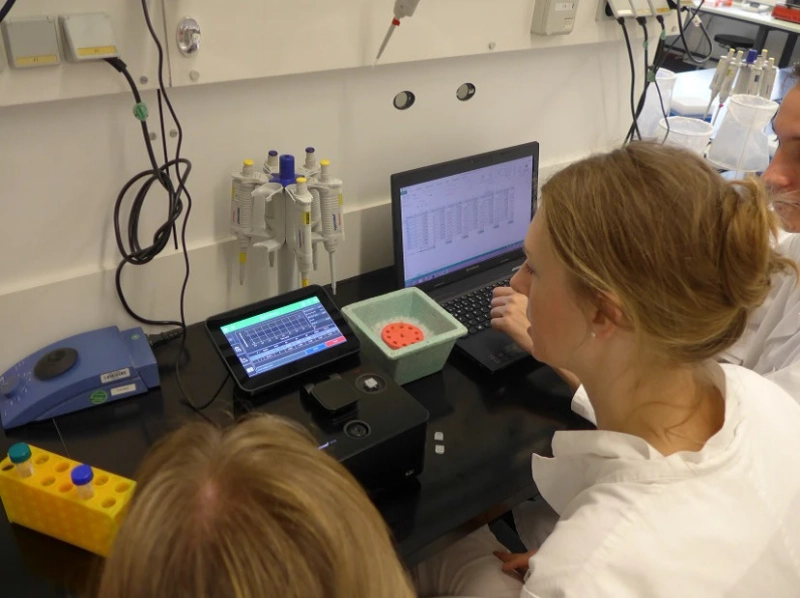In today's fast-paced scientific research climate, laboratories are continually looking for ways to increase efficiency, accuracy, and data management. Integration of NanoPhotometers with Laboratory Information Management Systems (LIMS) is one exceptional option that has gained attention. This powerful combination not only streamlines laboratory workflows but also enhances productivity in ways that were previously unimaginable.
Understanding Nanophotometer And LIMS Integration
Before diving into the advantages of NanoPhotometer LIMS integration, let's briefly understand the components involved. A NanoPhotometer is a sophisticated instrument designed for the precise measurement of nucleic acid and protein concentrations in biological samples. Its ability to provide accurate results quickly is invaluable in various research applications, including genomics, proteomics, and molecular biology.
On the other hand, a Laboratory Information Management System (LIMS) is a software platform used for data management and laboratory workflow optimization. LIMS centralizes sample and data tracking, automates manual processes, and ensures data integrity. When integrated with NanoPhotometers, LIMS becomes the backbone of laboratory operations, providing a seamless environment for data handling and analysis. The Nanophotometer LIMS integration offered by https://www.implen.de is a game-changer for laboratories seeking to optimize their workflows and maximize the utility of their spectral data.
Improved Data AccuracyOne of the most significant advantages of NanoPhotometer LIMS integration is the enhancement of data accuracy. By automating data collection and transfer from the NanoPhotometer to the LIMS, the chances of human error are significantly reduced. This means that every data point is precise and trustworthy, eliminating the potential for transcription errors or misinterpretation of results.
Streamlined Workflow EfficiencyIntegrating NanoPhotometers with LIMS simplifies laboratory workflows. Researchers can easily track sample information, generate sample IDs, and assign specific tests or experiments within the LIMS interface. The NanoPhotometer can then access this information, ensuring that each sample is processed correctly. This procedure simplification increases efficiency and allows researchers to concentrate on science rather than administrative responsibilities.
Accelerated Data AnalysisTime is of the essence in scientific research, and NanoPhotometer LIMS integration can significantly reduce the time required for data analysis. The integration allows for real-time data transfer, enabling researchers to access results as soon as they are generated. This rapid data availability expedites decision-making processes, which is crucial in time-sensitive experiments or urgent research projects.
Enhanced Data TraceabilityIn scientific research, traceability is paramount. NanoPhotometer LIMS integration ensures that every step of the analysis process is recorded and easily traceable. Researchers can track the history of each sample, including when it was analyzed, by whom, and with which settings. This level of traceability is essential for quality control, regulatory compliance, and auditing purposes.
Effective Resource ManagementEfficient resource management is vital for laboratories, especially when dealing with high sample volumes. NanoPhotometer LIMS integration helps in resource allocation by providing insights into instrument usage and sample processing times. This information allows laboratories to optimize their instrument usage and personnel allocation, leading to cost savings and improved resource utilization.
Collaboration And Data SharingCollaboration is at the heart of scientific progress, and NanoPhotometer LIMS integration facilitates seamless cooperation among researchers. With data stored centrally in the LIMS, it becomes easy to share results with colleagues, both within and outside the laboratory. This fosters interdisciplinary collaboration and accelerates the pace of research.
Regulatory ComplianceIn many fields of research, compliance with regulatory standards is mandatory. NanoPhotometer LIMS integration assists laboratories in meeting these requirements by ensuring data accuracy, traceability, and security. The ability to create detailed audit trails and reports facilitates establishing compliance during inspections or audits.
Future-Proofing Your LabAs technology advances, it's essential to stay ahead of the curve. Integrating NanoPhotometers with LIMS future-proofs your laboratory. The adaptability of LIMS allows for the incorporation of new features and technologies as they emerge, ensuring that your lab remains at the forefront of scientific innovation.
Conclusion
In conclusion, the integration of NanoPhotometers with Laboratory Information Management Systems is a game-changer for modern laboratories. It not only enhances laboratory productivity but also improves data accuracy, streamlines workflows, accelerates data analysis, and ensures compliance with regulatory standards. With these advantages, researchers can focus on pushing the boundaries of scientific knowledge, confident in the reliability and efficiency of their laboratory operations. NanoPhotometer LIMS integration is a clear example of how technology can empower scientists to achieve more in less time, ultimately driving progress in various scientific disciplines.


